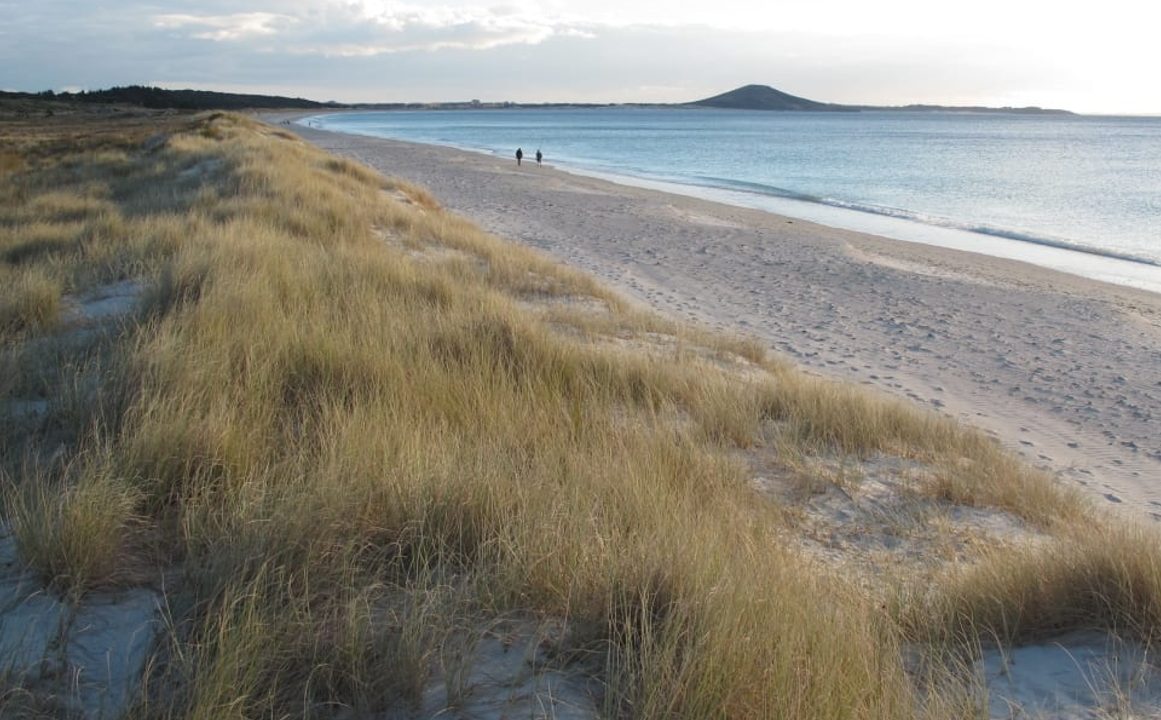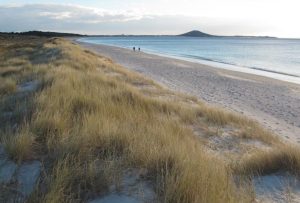
Far North, Karikari Beach Sand Dunes: Escalating Land Ownership and Maori Tribe Dispute
In the northern reaches of Far North, tensions are on the rise as a dispute between landowners and local Maori tribes intensifies over access to the sand dunes of Karikari Beach. The subtribes of the Ngāti Kahu Maori tribe, Whānau Moana and Te Rorohuri, have initiated this conflict by occupying Whatuwhiwhi Road.
The backdrop of this conflict stems from the landowners’ attempt to develop an access road to the beach through the sand dunes, involving the use of bulldozers. The landowners agreed to close one access route and replant vegetation, but the Māori tribes currently occupying the road insist they will not retreat until the sand dunes are fully protected.
These sand dunes are considered a sacred site, although they haven’t been officially registered as a ‘wāhi tapu.’ The Māori tribes claim that their ancestors are buried in the nearby ‘Haititaimarangai Marae.’
A woman who has been involved in environmental monitoring programs through the Department of Conservation (DOC) and local support emphasized that this dispute is raising concerns among citizens and the local community. It highlights worries about the erosion of sand dunes throughout the Karikari Peninsula.
This issue transcends the Māori tribes and is a matter of community concern for the entire peninsula. The sand dunes contain remains, whale bones, and diverse wildlife, all facing significant impact from vehicular traffic and climate change.
She also urged off-road drivers to respect the area and advised motorcycle enthusiasts visiting to see the beautiful sand dunes as more than just a recreational spot.

파노스(Far North), 카리카리 해변의 모래 언덕, 토지 소유와 마오리 부족 간 분쟁 고조
파노스 북단의 카리카리(Karikari) 반도에서 모래 언덕 해변 접근로의 설정을 놓고 토지 소유주와 지역 마오리 부족 간 분쟁이 고조되고 있다.
‘나티 카후(Ngāti Kahu)’ 마오리 부족의 하위 부족 ‘화나우 모아나(Whānau Moana)’와 ‘테 로로후리(Te Rorohuri)’는 화투휘휘(Whatuwhiwhi) 로드를 점거하면서 이번 분쟁을 시작했다.
분쟁의 배경은 토지 소유주가 불도저를 투입하여 모래 언덕을 향한 해변으로의 진입로를 개발하려는 시도에 대한 마오리 부족의 반발에서 비롯되었다. 토지 소유주는 한 개의 접근로를 폐쇄하고 대체 식물을 심는 것에 동의했지만, 현재 도로를 점거한 마오리 부족은 모래 언덕이 완전히 보호될 때까지 후퇴하지 않을 의사를 밝히고 있다.
이 모래 언덕은 신성한 장소로 여겨지며, 비록 공식적으로 ‘와히 타푸(wāhi tapu)’로 등록되지는 않았지만 이에 대한 시청에 계획이 신청된 상황인것이다. 마오리 부족은 이 모래 언덕 옆의 ‘하이티타이마랑가이(Haititaimarangai) 마라’에 자신들의 조상이 묻혀 있다고 주장하고 있다.
환경 보존을 중요시하는 단체인 자연보존부(DOC)와 시청 후원을 통해 환경 감시 프로그램에 참여한 한 여성은 이러한 분쟁이 국민과 지역사회에 경각심을 불러일으키고 있다면서, 카리카리 반도 전체의 모래 언덕 훼손에 대한 우려를 나타냈다.
이 문제는 마오리 부족 뿐만 아니라 반도 전체의 공동체 관심사로, 모래 언덕에서는 유골과 고래 뼈, 다양한 동식물이 발견되며 자동차의 오르내리기로 인한 침식과 기후 변화로 인한 영향이 이미 심각하게 나타나고 있다.
이 여성은 또한 이곳을 존중하고 오프로드 운전을 하려는 이들에게 다른 장소를 찾기를 권장하며, 오토바이로 오는 휴가객은 아름다운 모래 언덕을 즐기는 장소로만 보지 말아야 한다고 강조했다.
